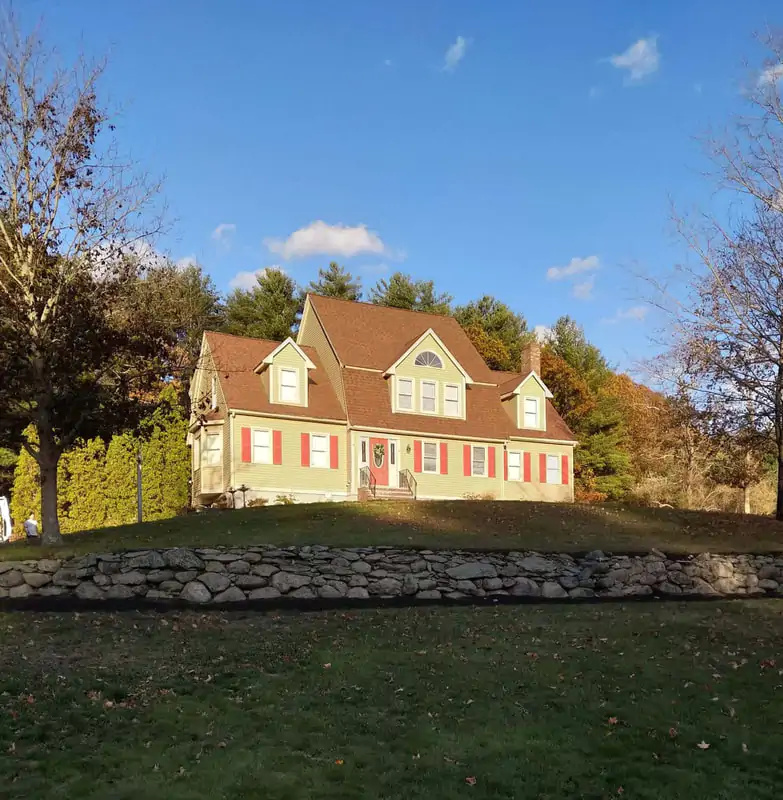Choosing the right paint finish is crucial when decorating your home. The type of finish you select affects the appearance of the walls and the durability and maintenance required. There are several types of paint finishes, each offering distinct benefits and drawbacks. Understanding the different kinds of paint finishes can help you make an informed decision that suits your space’s functionality and aesthetic needs. L ’s takexploreat paint finishes are available and what they can do for your renovation project.
What Are Paint Finishes and Why Do They Matter?
Paint finishes refer to the sheen or shine a painted surface has once it is dried. The sheen level can range from a flat, non-reflective surface to a glossy, highly reflective one. The different kinds of paint finishes affect the look of a wall and its durability, ease of cleaning, and maintenance. Choosing the right paint finish types ensures that your paint job looks good and performs well, providing longevity to your walls and reducing the effort needed for upkeep.
The Most Common Types of Paint Finishes
When it comes to painting your home, choosing the right paint finish is essential. Several paint types and finishes are available, each offering different levels of shine, durability, and ease of maintenance. Understanding the different kinds of paint finishes, from matte to high-gloss, will help you select the best option for your space.

Flat or Matte Finish
A flat or matte finish is one of the most popular types of wall finish. It has no shine, which makes it ideal for hiding imperfections on the surface. This finish absorbs light, offering a smooth, subtle look. It’s typically used in living rooms or bedrooms where high durability is less of a concern. However, matte finishes can be more difficult to clean and may show wear faster in high-traffic areas.
Eggshell Finish
Eggshell finishes are slightly more reflective than flat paints, giving walls a soft, low-luster appearance. This durable and easy-to-clean finish is suitable for moderate-traffic areas like dining rooms and hallways. One of its major advantages is its ability to hide minor wall imperfections while still offering a bit of shine. However, it might not be ideal for areas exposed to heavy moisture, as it is less resistant to stains than other finishes.
Satin Finish
Satin finishes strike a balance between matte and glossy. They provide a soft sheen that’s more durable than flat or eggshell finishes, making them perfect for kitchens, bathrooms, or high-traffic areas. Satin finishes are easy to clean and resist moisture well. However, because of their slight shine, they may highlight surface imperfections. It is essential to choose satin for areas where durability is important but the high-gloss shine of other finishes is not desired.
Semi-Gloss Finish
A semi-gloss finish is highly reflective and provides excellent durability. It is often used in areas that require frequent cleaning, such as kitchens, bathrooms, or trim work. The shine helps repel moisture and resist stains. However, its reflective nature can highlight flaws on the surface, so it is essential to ensure the wall or trim is smooth. Semi-gloss finishes are a great choice for spaces needing style and easy maintenance.
High-Gloss Finish
High-gloss finishes are the most reflective of all the paint finishes, offering a shiny, mirror-like appearance. These finishes are incredibly durable and easy to clean, ideal for areas exposed to high moisture or heavy wear, such as kitchens and doors. However, the high shine can emphasize imperfections, and the finish may require more preparation for a smooth application. High-gloss finishes work better for trim or furniture than large wall surfaces.
Specialty Paint Finishes

These finishes go beyond traditional options, offering everything from textured surfaces to metallic sheens. Whether you’re looking for a vintage look with chalky finishes or a luxurious shine with metallics, these different paint finishes allow you to create distinctive, personalized designs.
Textured Finishes
Textured finishes add depth and interest to walls, creating a more rustic or distinctive look. They are commonly applied in areas like feature walls or accent walls to create visual impact. Textured finishes can also hide imperfections and provide soundproofing qualities. However, they can be harder to clean and maintain, and their complex application process can make them more time-consuming and expensive.
Chalky Finish
Chalky finishes are often used for a vintage or matte appearance, giving surfaces a soft, smooth feel. This finish is popular for furniture and home décor projects, particularly in DIY or shabby-chic settings. Chalky paint is easy to apply and offers good coverage. The downside is that it may be less durable and require sealing to protect it from wear. Chalky finishes are ideal for creating a particular aesthetic but may not be suitable for high-traffic areas.
Metallic or Pearlescent Finishes
Metallic or pearlescent finishes offer a unique shimmer and are typically used for decorative purposes. These finishes reflect light beautifully, adding glamour and sophistication to any room. They are perfect for accent walls, trim, or decorative objects. However, these finishes may require more maintenance to keep their shine, and their application can be more challenging. Metallic finishes are not the best option for entire walls, but they can transform a room with a touch of luxury. For more professional insight on decor applications, consider consulting experts who specialize in painting services South Shore.
Choosing the Right Paint Finish for Your Space
Selecting the right paint finish is crucial for both aesthetics and functionality. When choosing between types of finishes for walls, consider the room’s purpose, traffic levels, and desired look. Whether you need a durable satin finish for a kitchen or a matte finish for a bedroom, the right paint finish ensures long-lasting beauty and easy maintenance.

Consider the Room’s Functionality
When selecting the right paint finish types, consider the room’s purpose. For example, high-traffic areas like hallways or children’s rooms may require finishes that are easy to clean and can withstand wear and tear. In contrast, spaces like bedrooms may prioritize aesthetics over durability, making matte or eggshell finishes a good choice. Think about how the room will be used daily to ensure your choice meets both visual and functional needs.
Lighting and Aesthetic Preferences
Lighting significantly affects how different kinds of paint finishes will appear in a room. Glossy finishes reflect light, while matte finishes absorb it, creating various moods and effects. A satin or semi-gloss finish can help brighten up the space if your room has limited natural light. Your aesthetic preferences are equally important; if you prefer a soft, subtle look, a matte or eggshell finish may be more suitable, while a high-gloss finish can offer a more modern, polished feel.
Durability and Maintenance Needs
Durability and ease of maintenance are essential when choosing a paint finish. Glossy finishes, like semi-gloss or high-gloss, are much easier to clean and maintain in areas prone to moisture or dirt. However, they may highlight imperfections on the wall. A matte or eggshell finish might be a better fit for spaces with lower maintenance needs. Consider how much time you are willing to spend on upkeep and the level of durability required for the space.
Transform Your Space with the Right Paint Finish
Selecting the right paint finish can significantly transform the look and feel of your space. Whether you choose a matte finish for a cozy living room or a high-gloss finish for a sleek, modern kitchen, the finish type you select impacts the room’s overall style and functionality. By considering factors like room purpose, lighting, and durability needs, you can make a choice that enhances your space visually and ensures its longevity and ease of maintenance. Contact professional painters near you for expert advice!
Frequently Ask Questions on Paint Finish
1. What is the difference between eggshell and satin paint?
Eggshell and satin paint differ mainly in sheen and durability. Eggshell has a low-luster finish with minimal shine, making it good at hiding imperfections. Satin, on the other hand, has a slightly higher sheen, making it more durable and easier to clean. Satin is often preferred for high-traffic areas like kitchens and bathrooms.
2. Which is more durable: eggshell or satin paint?
Satin paint is more durable than eggshell. Its higher gloss creates a protective layer that resists moisture, stains, and frequent cleaning, making it ideal for busy areas. Eggshell is durable enough for low-traffic spaces but does not withstand scrubbing as well as satin.
3. Is eggshell or satin better for interior walls?
It depends on the room. Eggshell is great for living rooms, bedrooms, and hallways because it hides imperfections and offers a soft finish. Satin is better for high-traffic areas such as kitchens, bathrooms, and kids’ rooms because of its durability and moisture resistance.
4. What finish do professional painters use most often?
Professional painters often use eggshell or satin for interior walls, depending on the space. Eggshell is common for general living areas, while satin is chosen for bathrooms, kitchens, and other high-traffic rooms. Trim, doors, and cabinets are typically painted with semi-gloss or gloss finishes for extra durability.
5. Can I use eggshell paint in a bathroom or kitchen?
While you can use eggshell in a bathroom or kitchen, it’s not the best option. These areas have higher moisture levels, and eggshell does not resist water as well as satin. Satin is a better choice because it provides more protection against humidity and frequent cleaning.
6. What finish do designers recommend for walls?
Designers often recommend eggshell for a soft, elegant look in living spaces, as it provides a smooth, low-shine finish. However, for areas that need extra durability, such as kitchens, bathrooms, and high-traffic hallways, they suggest satin because of its subtle shine and better wear resistance.








